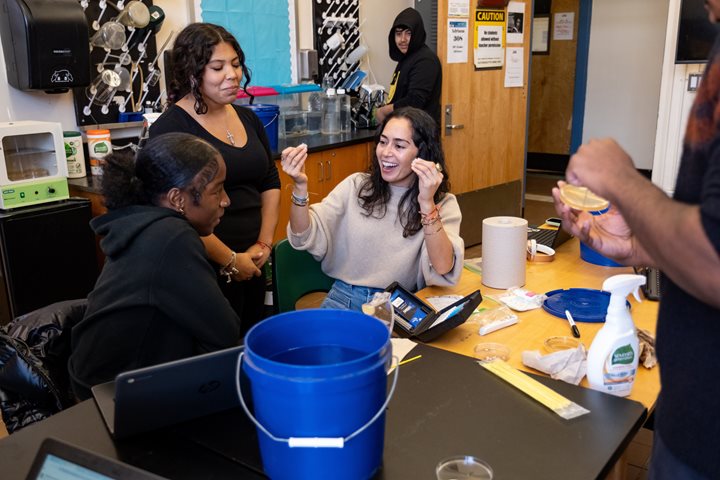ANDREW MCCARTHY is a director, an award-winning travel writer, and—of course—an actor. Andrew served as an editor-at-large with National Geographic Traveler magazine, and has written for The New York Times, The Wall Street Journal, and many others. He wrote this story for us on his iPhone while hiking the 500-mile Camino de Santiago, and filed it exactly on deadline, which absolutely illustrates ‘going farther.’ And he will be going farther still—Andrew heads south to Antarctica with us this season. Follow him on Instagram @andrewtmccarthy.
Get Inspired By Photos, Videos, Webinars, Stories, And Exclusive Offers.
Sign Up
I headed down to the river. I had a notion that I might get on a boat to Belém, on the coast, three days away. When I arrived at the port my nerve left me. I don’t know what I’d been expecting—ports can be hardscrabble places in the most idyllic of locales—and Manaus, in the heart of the Amazonian rainforest of northern Brazil, is not the most idyllic of locales. There is little to hold a traveler’s interest, save for the opera house, constructed at the height the brief and glorious rubber boom in the late 19th century. The building sits in the jungle town like a birthday cake for a gorilla. After a few days of hanging around I was at my wits’ end, itching to move.
The Teatro Amazonas (Amazon Theatre) Opera House in the heart of Manaus, Brazil.
The scene at the waterfront was chaos. River boats were tied three deep. Tough-looking men climbed through one boat on the way to the next to load gear. A small motor was hoisted high overhead on the precarious-looking winch, sacks of rice burdened sloping shoulders, huge bundles of bananas were tossed like footballs. Everyone was shouting. The boats themselves were listing and although only half loaded, already sat low in the black water.
On two boats people were staking out turf, slinging hammocks from the beams of the roof that protected the open air deck from the heavy Amazonian rains. “If they could do it…” I thought. But these people were of this place, this was their life, they used this transport to get to work, to return to their family—I was on a lark.
Ships in the harbor of Manaus at dusk, Amazon River, Brazil.
But I had set out from home in a conscious endeavor to get away from my comfort, to experience things I didn’t in my daily life, to go farther. But I knew I could never do this. I turned to leave. Then I saw the small, whitewashed shed.
“Just go a little farther,” I said to myself.
I approached the stout man behind the counter, his face was deeply creased. He told me it cost only a few reais for the journey down river. “I could spare a few bucks,” I thought. “Just buy a ticket, it can’t hurt.”
“Which boat?” the man demanded. I chose the one that appeared to be listing less than the others and handed over the money. I put the ticket in my pocket, knowing I would never use it.
I saw a few families with small children clamor from one boat to the next, overburdened with their personal cargo. The children laughed. The father began to tie a bright red hammock to the crossbeam. To my left, on a small hill, an old woman sat on a blanket on the ground. A stack of brilliantly colored hammocks were folded and on display before her.
“Go a little farther.”
I approached the woman and she smiled a toothless grin at me.
“Cuanto custem?” I asked. The hand-woven hammocks cost next to nothing.
“I’ve always wanted a hammock,” I thought. “I can bring it home.” I bought a yellow one.
At the riverbank I stood, hammock in hand, and looked out. The Amazon was miles wide at this point, seeming more an ocean than a river. Boats, already full with cargo, became dangerously overloaded. More people were getting settled on deck, a rainbow of hammocks now swung from the rafters as the wind picked up and the boats bounced off one another as the water slapped the shore.
“Just have a look around onboard. Get off in two minutes,” the voice in my head advised me.
Hammocks on a riverboat along the Amazon.
I clambered over one boat and on to the other for which I’d purchased a ticket. A few hundred people were now in a space that seemed designed for a quarter that many. I received some stares, a few smiles, mostly I was ignored as I walk the length of the boat. Beside me, two small children, no more than four years old, began to play peek-a-boo with me from the hammock on which they swung. Popping their heads over the edge, then ducking down again quickly, their smiles grew bigger with each repetition.
“Just see what it feels like to swing for a minute. Go a little farther.”
I slapped one of the support beams. “Sturdy enough,” I thought. I made a double knot and slipped into my yellow hammock. I almost flipped right out of it. My young friends found this hysterical.
By the time the boat sailed my nose was in a book. Then the rhythm of the movement and the boat’s engine grinding downriver had me napping in short order.
On the second day I sat on the bow, the river churning beneath us as hundreds, then thousands, then tens of thousands of small yellow butterflies crossed our path. In the evening the sun set quickly behind a dense jungle canopy. At dawn each day my young playmates reached their hands over the edge of my hammock to pinch my face and wake me.
A kaleidoscope of butterflies in the Amazon rainforest.
I had tricked myself, of course, played a game, coaxed myself to go farther, to a place I knew I wanted to go, yet had been afraid to dare.
Travel, as we know, is about much more than the destination. Travel is about the traveler. The physical journey often serves as the conduit for the inner one. Walking 500 miles across Spain on the ancient Pilgrims route—the Camino de Santiago—fear that I had carried my entire life, was revealed to me for the first time, and my liberation from it began, changing my place in the world. Sea kayaking in the waters off Alaska I threw a line in and caught a large salmon, cleaned it, cooked it over an open fire, and fed the group I was traveling among. This simple act became a symbolic one and planted a seed of confidence that I could indeed provide for the child my wife would soon be expecting. In Costa Rica I traveled deep in the Corcovado National Park in the wild Osa Peninsula and became lost. As darkness encroached, I steadied myself, employed what I had been taught, and walked into my strength and out of the jungle. In the Azores Islands my impulsiveness got the best of me and I jumped into the ring with a hundred other fools as the bull was let loose. It spotted my brightly colored shirt and came charging. Only luck and the kindness of strangers saved my skin and I learned a valuable lesson in individual judgment.
Andrew and his son Sam walking the Camino de Santiago. Photos: Andrew McCarthy
And there are places I yearn to go, to discover what they have to teach me—the Galápagos, Antarctica. And I have an inexplicable desire to stand before a Baobab tree.
Travel has been the University of my life. And always that education has come by going farther, farther than I thought I could, sometimes farther than I wanted. But always I came back enriched from that simple decision to break the routine, leave the known, take a chance—and go farther.
Sunrise in Mikkelsen Harbor, Trinity Island, Antarctica. Photo: Michael S. Nolan
Inspired to Go Farther? Browse our brand-new brochure for 85+ itineraries that will take you to some of the planet's most remote and remarkable destinations.





